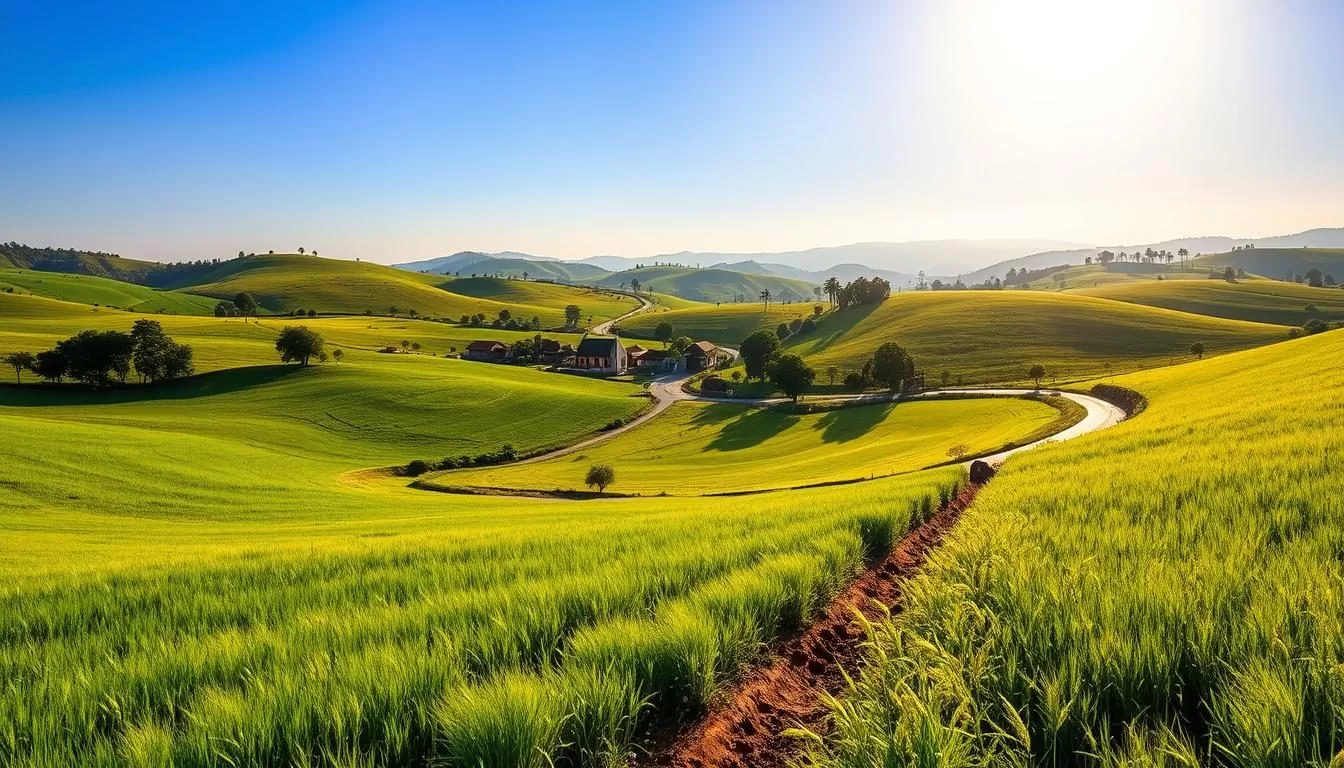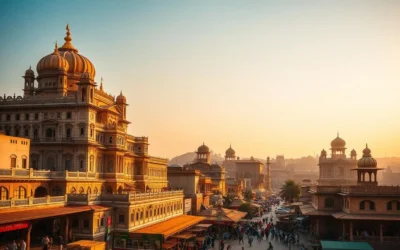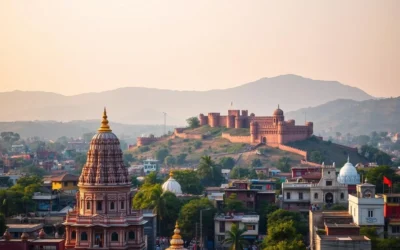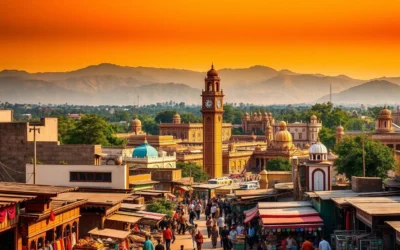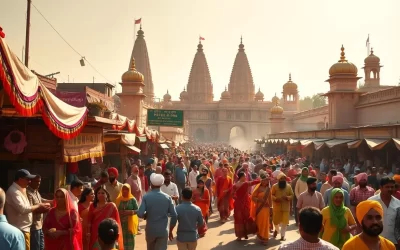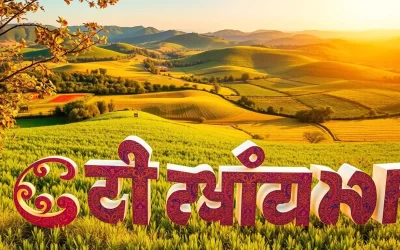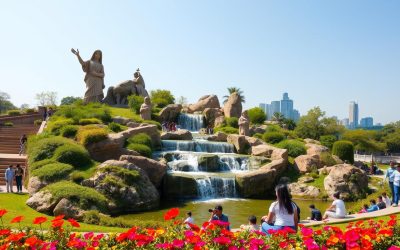✓ Accommodations✓ Flights✓ Rental Cars
Planning a trip to Punjab requires understanding its unique climate patterns to make the most of your visit.
The region experiences dramatic seasonal variations that can significantly impact your travel experience. To determine the ideal time for your visit, it’s crucial to navigate Punjab’s climate.
This comprehensive guide will help you discover which months offer the most comfortable temperatures and lowest rainfall, ensuring you maximize your enjoyment of cultural experiences and historical sites.
By understanding the local weather patterns, you can pack appropriately and plan activities that make your trip successful.
Understanding Punjab’s Climate
Understanding the climate in Punjab is essential for a well-planned visit. The region’s climate is influenced by its geographic location and distinct seasonal patterns.
Geographic Location and Its Impact on Weather
Punjab’s geographic location significantly impacts its weather conditions. Situated in the northwestern part of India, Punjab experiences a continental climate with extreme temperatures during summer and winter. The region’s proximity to the Himalayas and the Thar Desert also plays a crucial role in shaping its climate.
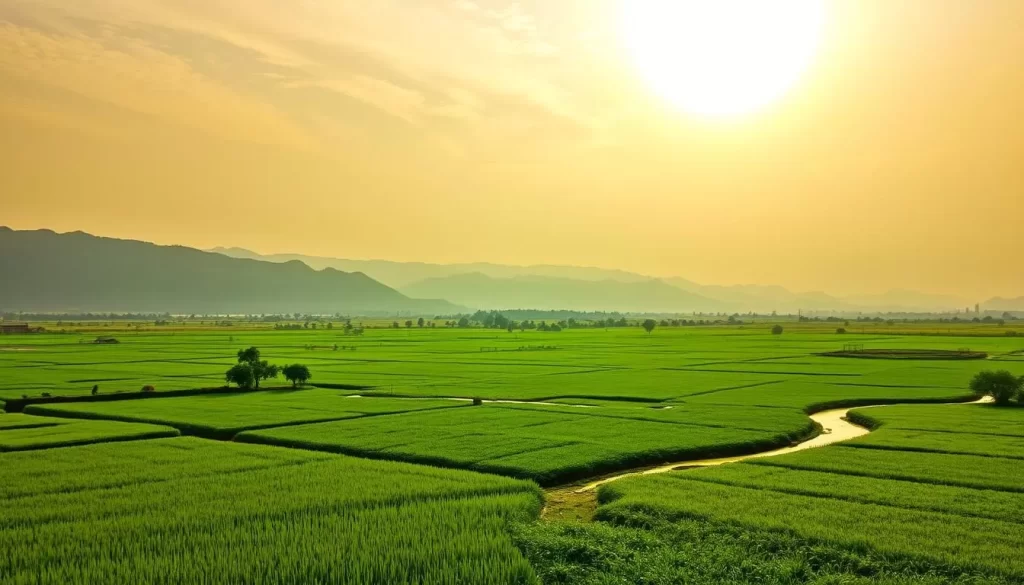
The Three Distinct Seasons of Punjab
Punjab experiences three well-defined seasons: winter (October to March), summer (April to June), and the monsoon season (July to September). Winter brings cool temperatures and clear skies, while summer is characterized by intense heat. The monsoon season brings much-needed rainfall, increasing humidity. Each season offers a unique experience, with varying advantages and challenges, helping you determine the best time visit.
Winter in Punjab: October to March
From October to March, Punjab experiences a winter season that is perfect for exploring its historical sites and enjoying local festivals. The cool weather makes it an ideal time to visit this vibrant region.
Temperature Ranges and Weather Conditions
During winter, Punjab’s temperature ranges from cool to cold, making it a great place for those who enjoy milder winters. The average temperature during the day is around 15°C to 20°C, while nights can be quite chilly, sometimes dropping to around 5°C.
| Month | Average Day Temperature | Average Night Temperature |
|---|---|---|
| October | 25°C | 15°C |
| January | 15°C | 5°C |
| March | 20°C | 10°C |
Winter Festivals and Cultural Experiences
Winter is a significant part of Punjab’s cultural calendar, with festivals like Lohri and Makar Sankranti being celebrated with great fervor. These festivals offer a glimpse into the region’s rich cultural heritage and are a great way to experience the local traditions.
Best Winter Activities in Punjab
Winter is the best time to enjoy various activities in Punjab. You can visit the Golden Temple in Amritsar, which is beautifully illuminated during winter evenings. Wildlife enthusiasts can explore the parks like Harike Wetland and Bird Sanctuary, home to migratory birds during this season. Additionally, you can enjoy rural tourism, culinary tours, and walking tours of historic cities like Amritsar, Patiala, and Kapurthala.
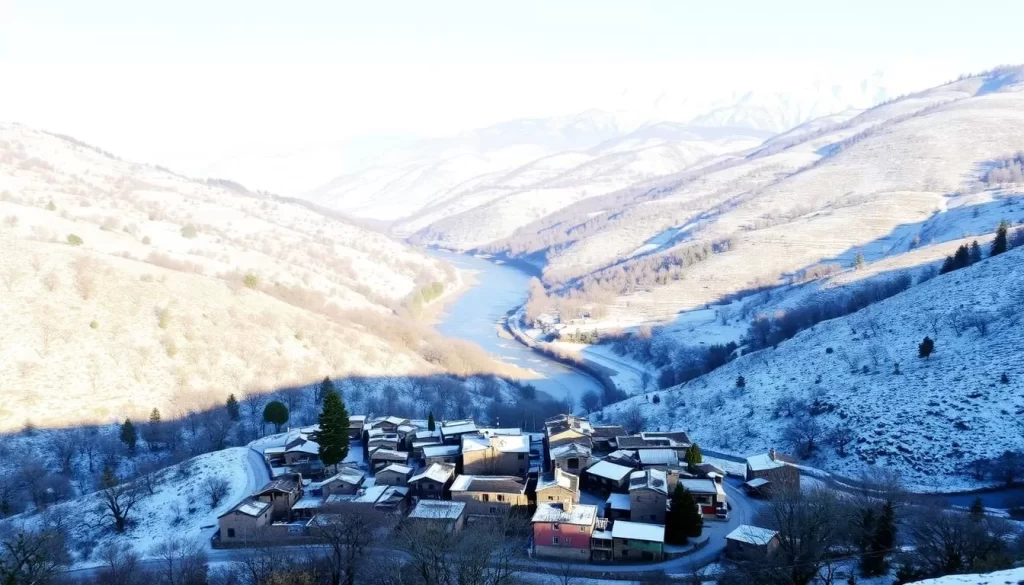
Summer in Punjab: April to June
From April to June, Punjab experiences a scorching summer that is best navigated with careful planning. While the heat can be challenging, there are numerous ways to enjoy your visit to India during this time.
Dealing with the Heat: Temperature Patterns
Summer in Punjab is characterized by high temperatures, often reaching their peak in May and June. The heat can be intense, making it essential to plan your daily activities accordingly. Understanding the temperature patterns can help you prepare for the hot days.
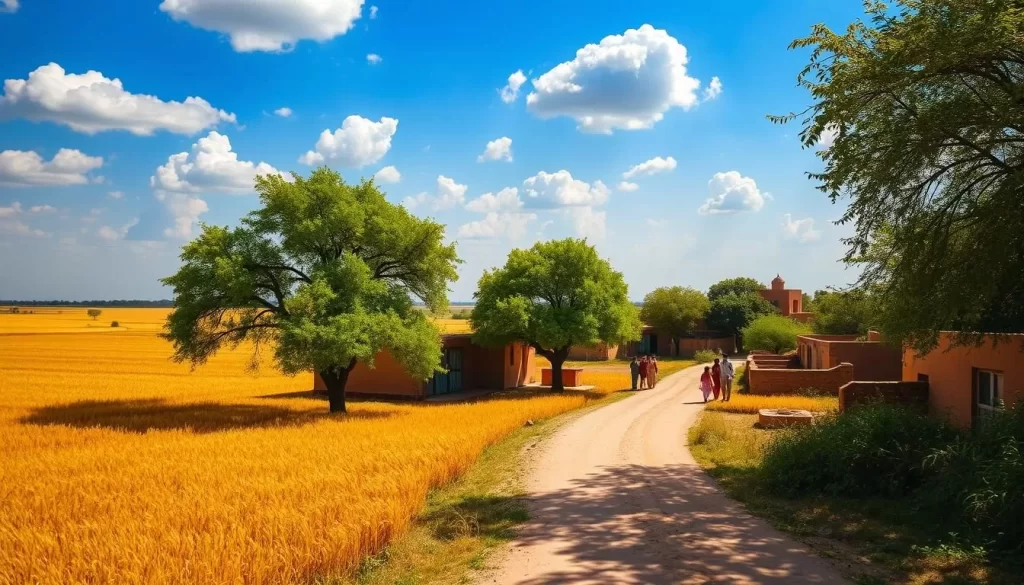
Summer Festivals and Events
Despite the heat, summer in Punjab is a time for vibrant festivals and events. You can experience the local culture by participating in these celebrations, which take place over several days. These events offer a glimpse into the rich heritage of Punjab.
Tips for Traveling During Punjab’s Summer
If you must travel to Punjab during the summer, it’s crucial to be prepared. Here are some tips to make your trip more comfortable:
- Plan your outdoor activities for early mornings and late evenings to avoid the peak heat.
- Stay hydrated by drinking plenty of water throughout the day.
- Dress in loose, light-colored clothing that allows for airflow and protects your skin.
- Consider visiting nearby hill stations for a respite from the heat.
By following these tips, you can have a more enjoyabletime visiting Punjab even during the hot summer months.
Monsoon Season: July to September
The monsoon season in Punjab is a time of renewal and vibrant natural beauty. As the region experiences heavy rainfall, the landscape transforms into a lush green paradise.
Rainfall Patterns and Humidity Levels
During the monsoon season, Punjab receives significant rainfall, with days often characterized by heavy downpours. The humidity levels are high, making the atmosphere feel warm and muggy. The average rainfall during these months contributes to the region’s agricultural prosperity.
Monsoon Travel Challenges and Opportunities
Traveling in Punjab during the monsoon can be challenging due to disruptions in transport services caused by heavy rain. However, this season also offers opportunities to experience the region’s natural beauty in a unique way. Visitors can enjoy the lush landscapes and replenished water bodies, making it an ideal time for nature lovers.
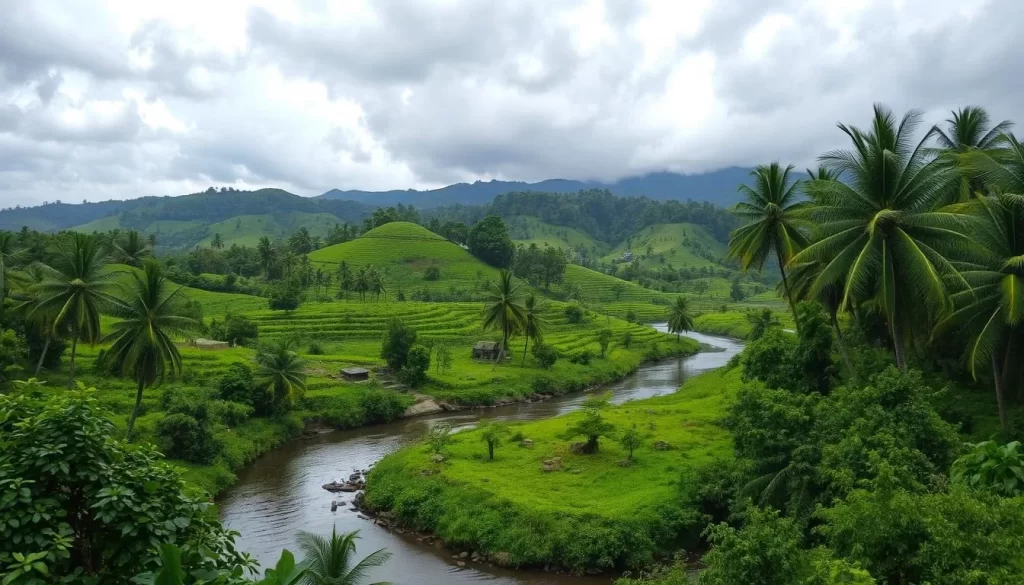
Experiencing Punjab’s Lush Countryside
The monsoon transforms Punjab’s countryside into a verdant paradise, showcasing its nickname, “The Land of Five Rivers.” The agricultural fields turn brilliantly green, and rural Punjab comes alive with farming activities across various parts of the region. Visitors can enjoy traditional monsoon foods, explore village life, and witness the region’s intricate water management systems in full capacity.
| Aspect | Description |
|---|---|
| Landscape | Lush green due to heavy rainfall |
| Agricultural Activities | Farmers engage in planting activities |
| Water Bodies | Rivers, canals, and waterways flow at full capacity |
Punjab, India: Best Months for a Weather-Savvy Trip
Punjab’s diverse climate means that the ideal time to visit varies, but certain months stand out for their exceptional weather conditions. You can plan your trip according to your preferences, whether you’re looking for pleasant weather or cultural festivities.
October to November: The Golden Period
During October and November, Punjab experiences a pleasant climate, making it an ideal time to visit. The temperatures are mild, ranging from 65-70°F (18-21°C) during the day, while nighttime temperatures can drop to around 50°F (10°C). This period is perfect for outdoor activities and exploring the region’s cultural heritage. You can enjoy the festive atmosphere as Punjab celebrates various festivals during this time.
February to March: Spring Delights
As spring sets in during February and March, Punjab transforms into a vibrant landscape. The temperatures are pleasant, with daytime temperatures around 70°F (21°C), making it ideal for sightseeing. You can witness the agricultural landscape flourish as winter crops grow, and the atmosphere is filled with the fragrance of blooming flowers.
December to January: For Cold Weather Enthusiasts
If you enjoy cooler weather, December and January are the best months to visit Punjab. Daytime temperatures range from 65-70°F (18-21°C), while nighttime temperatures can drop to 40-45°F (4-7°C). You can experience the local culture by participating in festivals like Lohri and enjoying traditional winter cuisine.
| Month | Daytime Temperature | Nighttime Temperature |
|---|---|---|
| October | 70°F (21°C) | 55°F (13°C) |
| December | 65°F (18°C) | 40°F (4°C) |
| February | 70°F (21°C) | 50°F (10°C) |
Month-by-Month Weather Guide for Punjab
To make the most of your trip to Punjab, it’s vital to know what to expect from the weather month by month. Punjab’s climate is characterized by three distinct seasons: winter, summer, and monsoon. Understanding these seasons will help you plan your visit accordingly.
January to March Weather Overview
January to March marks the end of winter and the beginning of spring in Punjab. During this period, the temperature gradually rises, making it a pleasant time to visit. Daytime temperatures range from 70°F to 85°F (21°C to 30°C), while nighttime temperatures can still be cool, especially in January.
The weather is generally dry and sunny, making it ideal for outdoor activities and sightseeing. As spring sets in, the landscape becomes lush and green, adding to the state’s natural beauty.
April to June Weather Overview
Summer arrives in Punjab from April to June, bringing with it high temperatures and dry conditions. Daytime temperatures often soar above 100°F (38°C), making it essential to stay hydrated and protect yourself from the sun.
Despite the heat, summer is a good time to enjoy Punjab’s cultural festivals and events. The state comes alive with vibrant celebrations, offering a unique glimpse into its rich heritage.
July to September Weather Overview
The monsoon season in Punjab starts in July and continues until September. This period is characterized by heavy rainfall and high humidity, transforming the landscape into a lush green paradise.
| Month | Average Rainfall | Temperature Range |
|---|---|---|
| July | 8-10 inches (200-250mm) | 85-95°F (29-35°C) |
| August | 8-10 inches (200-250mm) | 85-95°F (29-35°C) |
| September | 4-6 inches (100-150mm) | 80-90°F (27-32°C) |
The monsoon season brings relief from the summer heat but also poses challenges for travelers due to the heavy rainfall and humid conditions.
Planning Around Punjab’s Major Festivals
If you’re planning to visit Punjab, timing your trip around its major festivals can enhance your cultural experience. Punjab is a state that celebrates its cultural heritage with great fervor, and its festivals are a significant part of this heritage.
Baisakhi: Punjab’s Harvest Festival
Baisakhi, celebrated on April 13 or 14, is a significant harvest festival in Punjab, marked by fairs dedicated to Punjabi culture. It’s a time when the state comes together to celebrate the harvest season with traditional dances, music, and food. You can experience the rich cultural heritage of Punjab during this festival.
Lohri and Winter Celebrations
Lohri is a popular winter festival celebrated with bonfires, folk songs, and traditional dances. It’s a significant event that marks the end of winter and is usually celebrated on January 13. You can enjoy the warmth and hospitality of the Punjabi people during this time of the year.
Other Notable Festivals Throughout the Year
Punjab celebrates numerous festivals throughout the year, including Hola Mohalla, Guru Nanak Jayanti, Diwali, Teej, Raksha Bandhan, Gurpurbs, Basant Panchami, Republic Day, and Independence Day. These festivals are celebrated in different parts of the country, showcasing the rich cultural diversity of Punjab.
| Festival | Time of Celebration | Significance |
|---|---|---|
| Baisakhi | April 13/14 | Harvest Festival |
| Lohri | January 13 | End of Winter |
| Diwali | October/November | Festival of Lights |
Packing Tips for Different Seasons in Punjab
When traveling to Punjab, it’s crucial to pack according to the season to ensure a comfortable trip. The state’s climate varies significantly throughout the year, making it essential to be prepared.
Winter Essentials
For winters (October to March), pack warm clothing, including thermal layers and a good quality jacket. You’ll also need gloves, hats, and scarves to protect against the cold.
Summer Necessities
During summers (April to June), lightweight and breathable clothing is a must. Stay cool with cotton clothes, and don’t forget your sunglasses and sunscreen for protection against the harsh sun.
Monsoon Must-Haves
For the monsoon season (July to September), pack quick-drying clothes and a waterproof jacket. Other essentials include waterproof footwear, a sturdy umbrella, and mosquito repellent to keep you dry and comfortable during your travel days.
| Season | Months | Packing Essentials |
|---|---|---|
| Winter | October to March | Warm clothing, thermal layers, gloves, hats, scarves |
| Summer | April to June | Lightweight, breathable clothing, sunglasses, sunscreen |
| Monsoon | July to September | Quick-drying clothes, waterproof jacket, umbrella, mosquito repellent |
Conclusion: Making the Most of Your Punjab Visit
With its distinct seasons, Punjab offers a unique experience for travelers. The best time to visit is during the October-November and February-March windows when weather conditions are most pleasant. You can enjoy cultural experiences like Baisakhi in April or Lohri in January, or explore wildlife sanctuaries during the winter months.
Thanks for exploring this guide to Punjab’s weather patterns. We hope it helps you plan the perfect Punjab adventure, making the most of your time and trip to this vibrant region.
The above is subject to change.
Check back often to TRAVEL.COM for the latest travel tips and deals.
